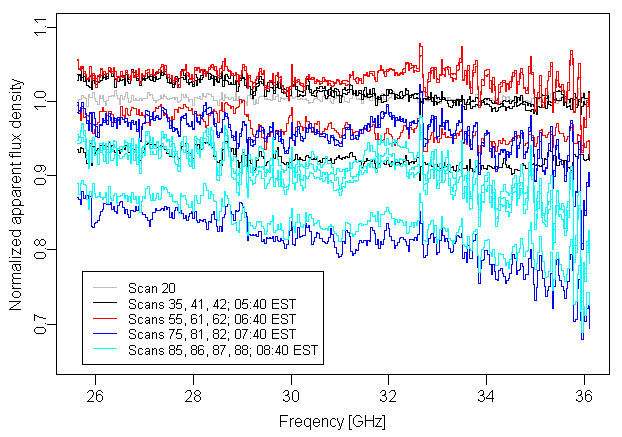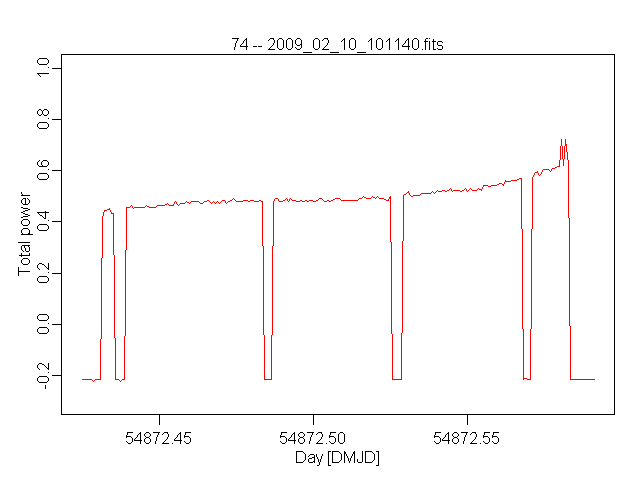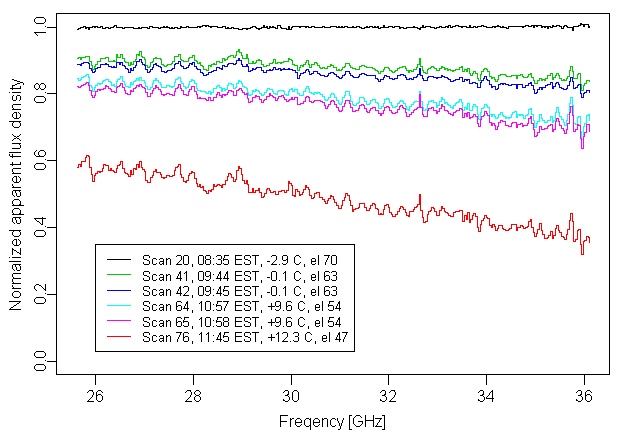Optical gain notes
The following figures show the effect of pointing and refocusing on
system optical gain, both under relatively benign conditions and when
the temperature is increasing rapidly. Hourly focusing and
pointing keeps the gain error within about 15% under benign conditions
(nighttime, wind < few m/s). Errors up to a factor two are
possible when the Sun warms the antenna.
The following plot shows normalized flux density for the pointing
source during
a 5:00-9:00 AM shift (2009 session 38). The lowest curve in each
color
is a spectrum of the calibrator just before poiniting and focusing; the
others are after pointing. The grey curve shows repeatablilty of
the
standard spectrum, scan #19 at the beginning of the run. All are
60s
integrations with secondary nodding but no sky companion for
subtraction.

The plot below shows the receiver total power through the run -- dips
mark pointing -- so the atmospheric transmission changed relatively
little for most of the run. The spikes at the far right end of
the trace show noise diode power (the noise diode is almost always off
except for receiver gain calibration). Comparison of spectra
above shows that the noise diode has no effect on spectral shape, as
expected from its synchronization with data collection.

This next plot shows the normalized apparent flux density for a
pointing source
taken
during
a morning to noon run, 2009 session 37. The drop in apparent flux
density and changing tilt across the spectrum can be attributed to dish
surface distortions as the antenna surface heated. The weather
was overcast; times, air temperatures, and elevations are on the plot.
All are 60s
integrations with secondary nodding but no sky companion for
subtraction.

Questions or comments? Please contact Andrew Harris.


